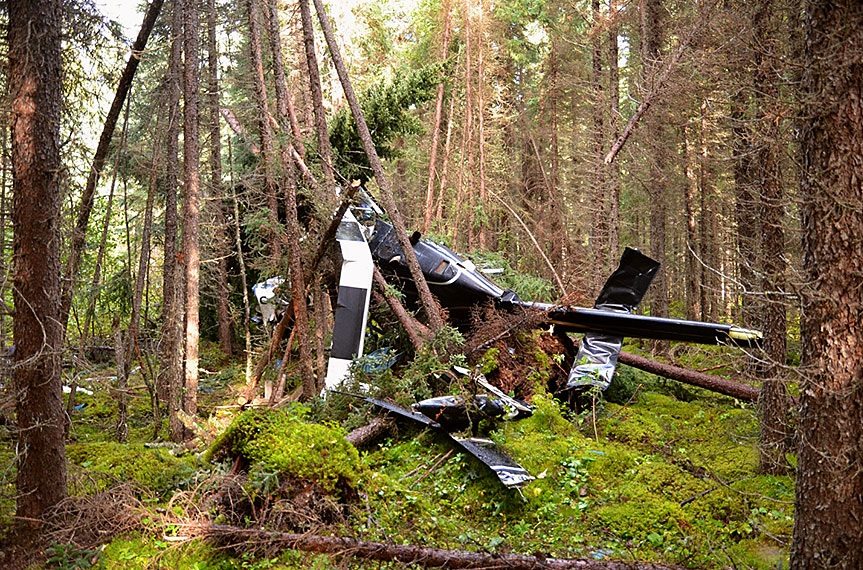The Transportation Safety Board has found the fatal helicopter crash near Fox Creek last fall was caused in part by the pilot’s decision not to refuel. The Ridge Rotors Bell 206B Jet Ranger was flying two people conducting aerial surveys of pine beetles for Alberta Agriculture and Forestry when it went down 20 kilometres southwest of the town on September 5, 2016.
According to the TSB report released Monday, the helicopter was flying 160 feet above ground when it suddenly lost power. It fell and hit trees, killing a surveyor sitting in the front seat. She was identified as a 44 year old woman.
The pilot, a woman in her early 40s, was seriously injured and flown by STARS Air Ambulance to the QEII Hospital in Grande Prairie. The male surveyor in the back seat suffered minor injuries, while the helicopter itself was substantially damaged.
The TSB says their investigation found that while taking a break on a sand bar before the accident, the pilot decided not to refuel at a station nearby. What gas was left was down to the minimum recommended quantity.
“Ridge Rotors’ practice of regularly operating helicopters with low fuel levels likely influenced the pilot’s decision to continue the flight,” says the report.
Just before the crash, the chopper turned, and the TSB says the acceleration likely caused air to get into the fuel pumps. That would have stopped gas from flowing, leading to the engine power loss. An automatic ignition system could have prevented the power loss, but it was not turned on, as the company only used it in snow.
“The investigation concluded that low altitude survey work in combination with low fuel levels and the inactive automatic ignition system contributed to the inability to recover from the engine power loss,” the report reads.
“It is important for operators to understand the limitations of the Bell 206B helicopter fuel system and the risks associated with flights conducted with less than 20 US gallons of fuel,” it continues. “If operators do not observe the minimum fuel quantities recommended in the flight manual, there is a risk that the helicopter will be operated at fuel levels conducive to engine power loss.”
Since Transport Canada’s inspection of Ridge Rotors, the company has taken action to address some of its “minor findings of non-compliance.” It has also made changes to its standard operation procedures and trained pilots on them.


